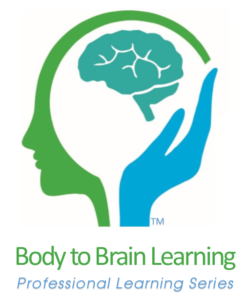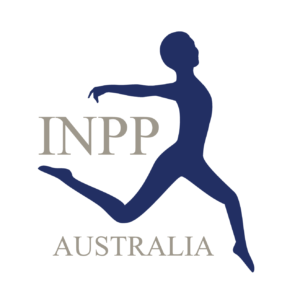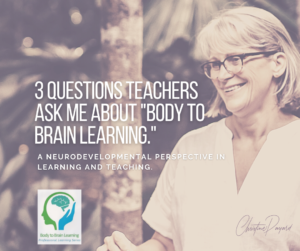 There are at least 3 questions teachers ask me about my work as a neurodevelopmental educator and consultant helping children with learning difficulties. I call it “body to brain learning”.
There are at least 3 questions teachers ask me about my work as a neurodevelopmental educator and consultant helping children with learning difficulties. I call it “body to brain learning”.
Here are the questions and some short (and longer) answers:
1.The first question teachers ask is: “What is ‘Body to Brain Learning?'”
Short answer:
Body to Brain Learning® is a neurodevelopmental approach to education and understanding HOW we learn. Basically, It’s a developmental and functional view of learning. Our body needs to be developmentally mature and function well at the appropriate life stage for us to learn well.
Body to Brain Learning® is also a professional learning series to help me share this crucial information with educators and others who work with children with learning challenges. This knowledge was missing from my professional knowledge bank as a teacher. I know it’s missing from the professional knowledge banks of many others who work with children that experience learning and functional challenges, not just teachers.
In our Body to Brain Learning® PD Series, we teach you about what to look for and how to use this perspective (supported by brain science) in your learning based practice.
Longer answers:
There are two parts to the longer answer:
Part #1: The Learning Process
Body to Brain Learning® is all about the learning process. HOW we learn.
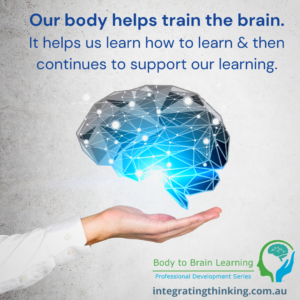 It’s about how we learn as humans from a developmental, body perspective. It acknowledges that we learn with and through our body.
It’s about how we learn as humans from a developmental, body perspective. It acknowledges that we learn with and through our body.
It is about identifying how our body impacts our learning.
It examines how body systems directly impact our learning success from a neurodevelopmental perspective and is a way of working in education, and, in learning support agencies/professions.
Our brain processes information it receives through the body and that enables us to learn and use that information in different academic, life and social contexts. That’s one way that our body helps our brain to learn.
If the body isn’t supporting our brain to receive and effectively process information from the world around us, then things can go awry in the learning process and learning can be a struggle.
We see evidence of immature body systems in the way children approach learning tasks such as reading, writing, mathematics, physical education and more. We can see in their posture, movement and behavioural responses that their body is not making academic learning easy; in fact, it may be complicating it. We are talking about immature neuromotor and sensory systems.
This neurodevelopmental lens as a teacher helps us modify our pedagogic practice to enhance student learning and potential. By understanding neurodevelopmental aspects of the learning process and what to look for in students neurophysiological behaviours, we gain a better understanding of HOW our students learn. (That’s AITSL standard #1)
Part #2: The Professional Learning Series
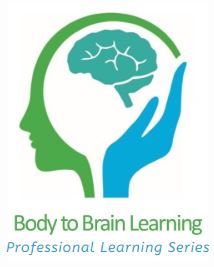 Body to Brain Learning® is also the name of a professional learning series for educators, health care professionals and families, who want to know more about how the body impacts learning potential and how the body helps support learning.
Body to Brain Learning® is also the name of a professional learning series for educators, health care professionals and families, who want to know more about how the body impacts learning potential and how the body helps support learning.
Body to Brain Learning® was founded by Dr Christine Payard (PhD) with the intention of making this neurodevelopmental approach to learning and teaching easy to understand and implement in practice.
It helps professionals (not just teachers) learn and apply concepts of neurodevelopment in their practice to help children and adults who may have learning challenges that are neurodevelopmentally based.
The first series for educators (“How the Body Tells the Learning Story”) provides introductory information and insight into how the body tells us about the learning stories of our students. It helps educators observe and begin to interpret the learning story the body is telling us about each of our students in our classrooms. Other Professional Development programmes can be found on the training page of our website: integratingthinking.com.au/training
2. The second question: “Isn’t ANY movement good enough to help our students learn?”
This is usually the context for that question:
“I notice there is a growing focus on the importance of movement for learning. Is this just about getting students to move more, eat well and be healthy? Our students are active. We know movement is important for health, well-being and learning. We know about body activity and core strength. Our students run around the oval every morning to wake up their bodies each day. We see that as part of their learning activities. Isn’t that all I need to know? Isn’t that enough?”
Short answer:
No, that’s not all you need to know and, no, it is not enough.
While running around and general movement is incredibly important, so is an educator’s understanding of the developmental sequence of our neuro-motor and sensory systems and how they underpin successful academic learning. That’s the Body to Brain Learning® function that interests us. Here’s why:
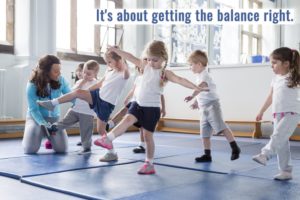
Developmental movement sequences matter.
Longer answer:
Body to Brain Learning® is a way of thinking about learning and how we learn. It’s about how the body helps the brain to learn using a neurodevelopmental perspective.
A neurodevelopmental lens in our teaching practice improves our teaching because of the insight it provides into HOW students learn.
Body to Brain Learning® is a neurodevelopmental approach that acknowledges we aren’t born to run, walk and talk immediately, and, our brain isn’t ready to learn academically until some of the body stuff is well developed.
Our body and brain need to progress through milestones and neurodevelopmental pathways to develop our senses fully and integrate them appropriately with our neuromotor systems. Each stage and sub-stage of development needs to fulfil a neural wiring, processing and functioning purpose.
Our body systems need to work together to support the “top-level” brain learning activities that our schooling systems and academic learning require.
Body to Brain Learning ® considers the developmental sequence of the early years and its impact on later learning at any age. It’s not just about when a child starts school. This isn’t just early childhood information. Here’s why:
We know the first three years of life are crucial for laying the foundations for learning success. Sometimes, due to any number of reasons, the body’s neuromotor and sensory systems don’t mature enough in that time to support the academic learning requirements our children face when they go to school. This immaturity can limit a child’s ability to learn and function in different contexts across their lifetime. Practitioners like me work with children, adolescents, young adults and older adults with this body system immaturity.
Body to Brain Learning ® uses concepts and theories of neurobiology, neuroplasticity, neuropsychology, child development, and education to look at how the body supports learning. It helps teachers (and other professionals working with children who have learning challenges) look at learning from a developmental and functional perspective. It asks: “How does the child’s body support their learning? Can we help improve their learning experience, particularly children with learning challenges? How can we mature these systems so that we can make the learning journey easier and more successful for our students who need help in this area? How can we help their function?”
Our focus in Body to Brain Learning ® is on developmental movement and the role it plays in supporting the learning process. This movement is different from the movement that supports health and fitness.
Well developed, mature neuromotor and sensory systems provide the foundations of success for a child’s learning journey. They mature through developmental movement sequences. We explore this concept of movement, its neuromotor and sensory connections, and assess and understand its impact on learning.
If a child has immature neuromotor and sensory systems, they are likely to struggle to control aspects of their body. This can impact their learning experience and success (eg. the child who can’t sit still, who is constantly distracted or distracts others, who can’t read and write well despite being motivated to learn, and so on).
Knowing what to look for in the body language of the students we teach (including how they move, sit and behave in class) gives us insight into how the student’s body supports their learning. A Body to Brain Learning ® approach is built on the premise that the body tells us a story about how students learn.
If the body doesn’t support learning, it can interfere with learning.
As teachers, we need to be able to identify if a student’s body and body processes are supporting their learning journey, or, interfering with it. This view of movement is different from getting the children to move more for health and wellbeing.
By identifying and interpreting the body story, we gain a better understanding of HOW our students are learning. And, if necessary, we can revisit developmental movement patterns to help mature our neuro-motor and sensory systems so that our students’ bodies function more effectively to support their learning.
It’s about knowing how movement contributes to a student’s learning journey and supports their academic learning function. That’s the “movement” we are talking about.
3. The third question teachers ask: “How do I know if a student has this type of learning challenges?”
Short answer:
I can send you the “Body to Brain Learning® Checklist for Educators”. Once you download it, you can observe if the student(s) you have in mind tick the boxes that may indicate there could be a body-based, neuro-developmental issue that is impacting their learning.
Here’s the link to sign up and receive that resource (and more information about what to do with it):
Send me the "Body to Brain Learning Educator's Checklist."
Longer answer:
When I ask the children with whom I work what they think/feel is happening with their body at school, I often get answers like they are “I’m fighting my body.” (Yes, some use those exact words).
So, what does this struggle look like?
Well, it can be different for each child, but, there are often similarities in behaviours, postures and approaches to classroom-based activities.
Once you see the body cues and understand what those body cues are telling you about how their bodies are impacting their learning, you can’t “unsee” them.
The easiest way I suggest to start identifying these body cues is to use the “Body to Brain Learning® Checklist for Educators”. Here’s a snippet from the checklist:
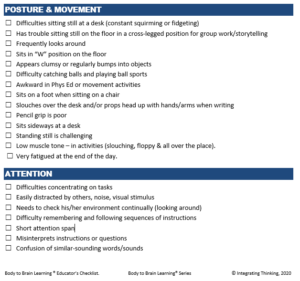
The “Body to Brain Learning® Checklist for Educators” includes other observations such as reading & writing behaviours, listening, vision, spatial awareness, social interaction, speech, vocabulary, a student’s demeanour and their attitude in class.
The checklist is a resource to help you start to look at your students with a “body to brain learning” perspective/lens so you can start to see how students are learning with their body.
Included in the checklist is an introductory explanation of what to do with the data you are gathering by using this observational tool. We give you guidelines to help you use this different lens in understanding HOW your students learn.
Remember, underpinning this work is the concept that if the body doesn’t support learning it can interfere with it, BUT, it can also tell us what is going on in a child’s learning journey. It can tell us that child’s learning story. The story of how they are using their body to support their academic learning.
So, what are the body stories that tell me about how my students learn? How do I read those stories?
Well, that’s another huge question…I’ll follow up with that in another conversation.
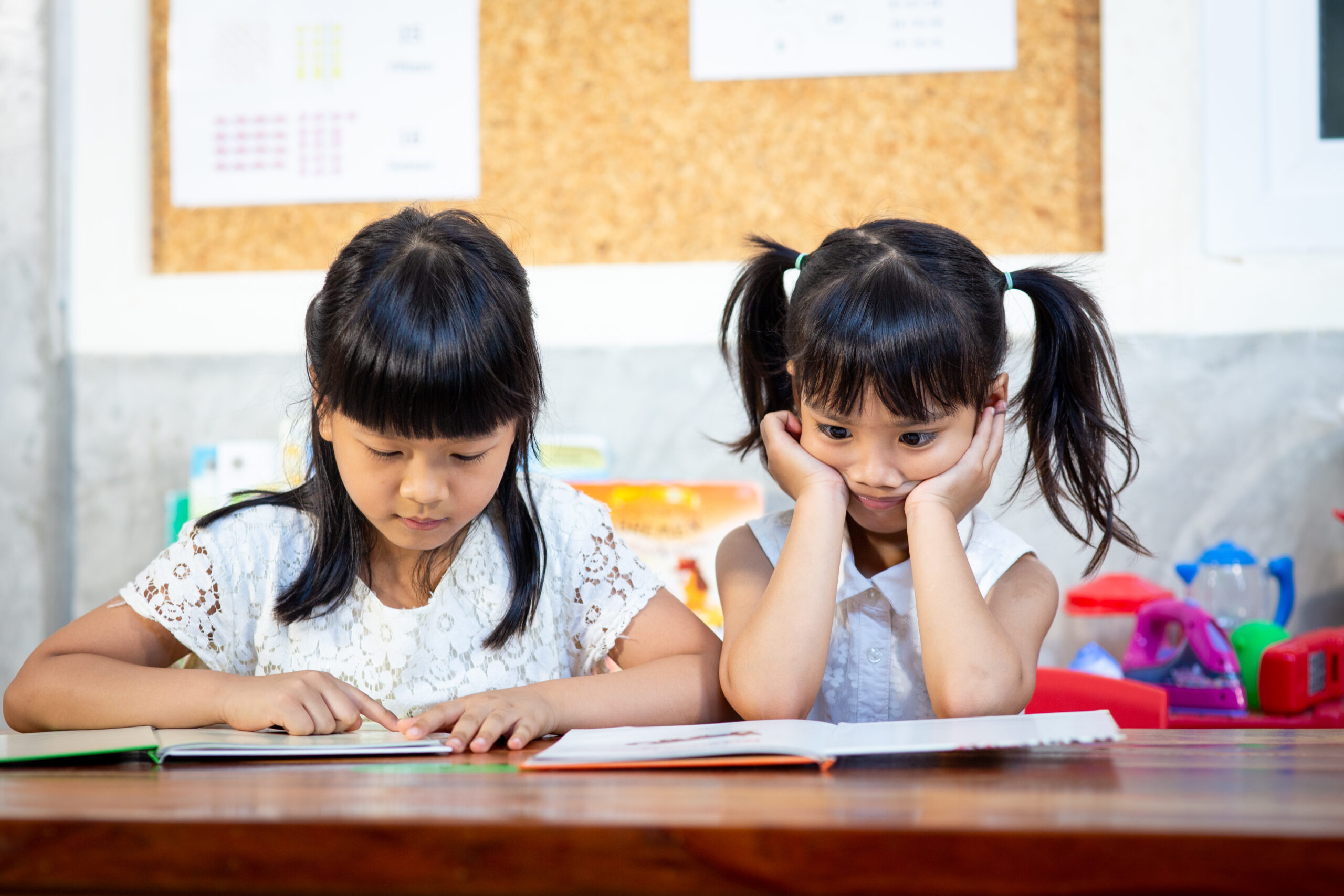
If you want to access the checklist and more information, here’s that link again:
Send me the "Body to Brain Learning Educator's Checklist."
When you sign up for our updates, I’ll keep you informed about blog posts, courses, articles and other things that focus on this area of learning, teaching and functional support.

Christine Payard (PhD) is the Director of Integrating Thinking ® and the founder of the Body to Brain Learning ® Professional Development Series. An educator, researcher, author and presenter, Christine has studied extensively in the area of literacy, learning, teaching and ways the body supports the learning process. She is an Educator with a neuro-developmental focus. She can be contacted by email: admin@integratingthinking.com.au
#body_to_brain_learning #integratingthinking #reading #learning #neuromotorimmaturity #bodystories #primitivereflexes #vision #visualprocessing #vision #inpp #inppaustralia #teaching #questions #checklist #learningsupport #helpingthebodysupportlearning
 “Which course?” … There are two Educator based PD courses in the Body to Brain Learning (R) suite of courses. Both are great for teachers and address AITSL standards. I’ve been asked recently: Which is best for me? What’s the difference? And, which one should I do for some body-based learning CPD so I can use this approach in our school?
“Which course?” … There are two Educator based PD courses in the Body to Brain Learning (R) suite of courses. Both are great for teachers and address AITSL standards. I’ve been asked recently: Which is best for me? What’s the difference? And, which one should I do for some body-based learning CPD so I can use this approach in our school?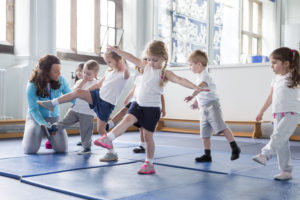
 “How the Body Tells the Learning Story (R)” is an introductory course for those who want to know more about what to look for when a child may present with learning difficulties or challenges, or is not performing to their potential and how the body indicates what may be underlying those learning difficulties. This course helps teachers identify the cues that suggest there may be neuromotor and sensory developmental immaturity and provides some basic neurodevelopmental information that explains this foundational aspect of learning.
“How the Body Tells the Learning Story (R)” is an introductory course for those who want to know more about what to look for when a child may present with learning difficulties or challenges, or is not performing to their potential and how the body indicates what may be underlying those learning difficulties. This course helps teachers identify the cues that suggest there may be neuromotor and sensory developmental immaturity and provides some basic neurodevelopmental information that explains this foundational aspect of learning.  The INPP Practitioner Course may interest you if you want to delve further into the concept of neuromotor immaturity. It is a four Module postgraduate level course that provides more detailed understanding of ways to assess and address neuromotor immaturity from a clinical and therapeutic perspective using the INPP (R) method. Teachers, allied health care practitioners including optometrists, occupational, speech and physiotherapists, osteopaths, and others working with children with learning challenges and dysfunctions have completed this course. This course provides greater insight and understanding into neuromotor immaturity and the clinical application of the INPP (R) Method. It enables practitioners to help individual children/students/adults on a one to one clinical basis. Dr Christine Payard (PhD) is the INPP Australia Principal providing training in the INPP method in Australia and New Zealand.
The INPP Practitioner Course may interest you if you want to delve further into the concept of neuromotor immaturity. It is a four Module postgraduate level course that provides more detailed understanding of ways to assess and address neuromotor immaturity from a clinical and therapeutic perspective using the INPP (R) method. Teachers, allied health care practitioners including optometrists, occupational, speech and physiotherapists, osteopaths, and others working with children with learning challenges and dysfunctions have completed this course. This course provides greater insight and understanding into neuromotor immaturity and the clinical application of the INPP (R) Method. It enables practitioners to help individual children/students/adults on a one to one clinical basis. Dr Christine Payard (PhD) is the INPP Australia Principal providing training in the INPP method in Australia and New Zealand.
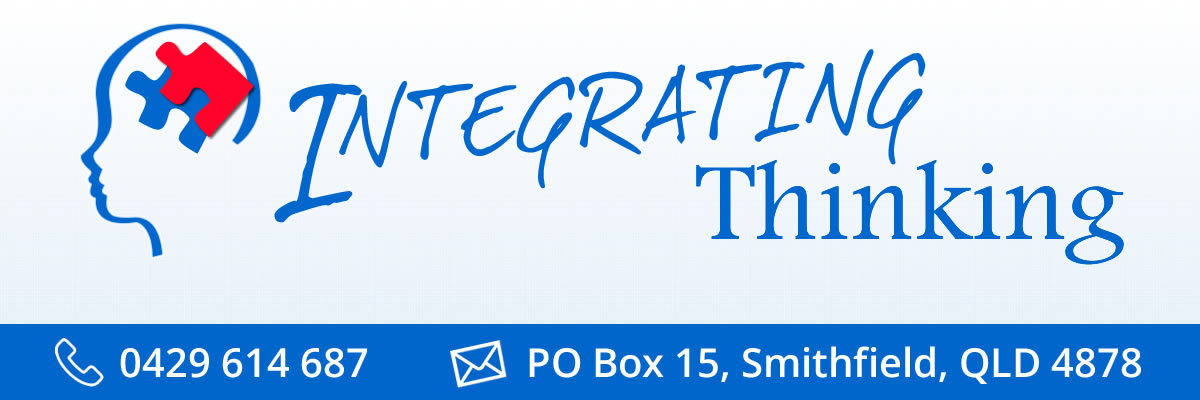
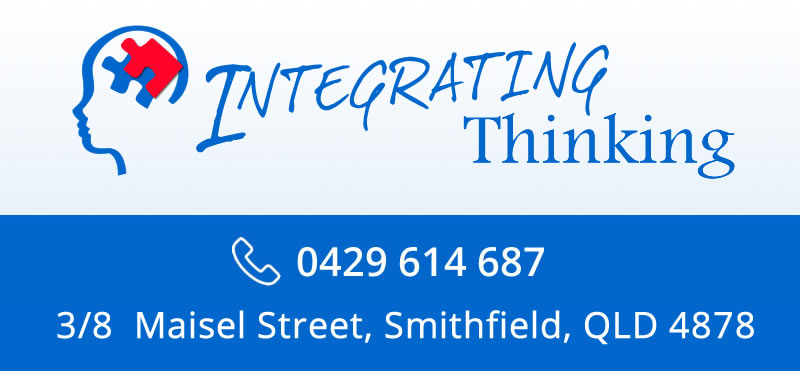


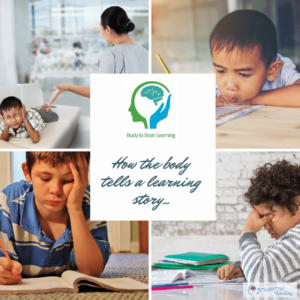 The Body Tells a Learning Story: An Introduction.
The Body Tells a Learning Story: An Introduction. About me: I’m
About me: I’m 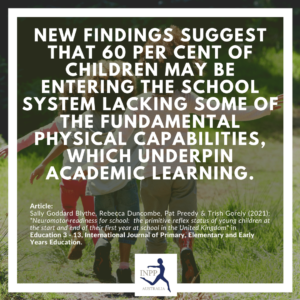 New Research:
New Research: There are at least 3 questions teachers ask me about my work as a neurodevelopmental educator and consultant helping children with learning difficulties. I call it “body to brain learning”.
There are at least 3 questions teachers ask me about my work as a neurodevelopmental educator and consultant helping children with learning difficulties. I call it “body to brain learning”. It’s about how we learn as humans from a developmental, body perspective. It acknowledges that we learn with and through our body.
It’s about how we learn as humans from a developmental, body perspective. It acknowledges that we learn with and through our body.  Body to Brain Learning® is also the name of a professional learning series for educators, health care professionals and families, who want to know more about how the body impacts learning potential and how the body helps support learning.
Body to Brain Learning® is also the name of a professional learning series for educators, health care professionals and families, who want to know more about how the body impacts learning potential and how the body helps support learning.





